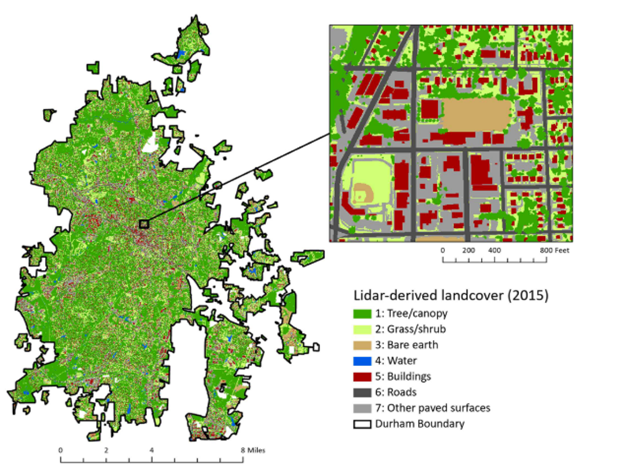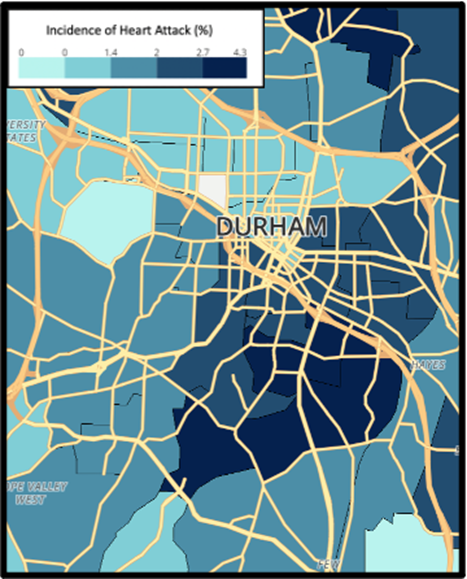Cultivating Partnership: A Plan to Get Trees Planted
Alexander is working to develop a tree-based health intervention with local nonprofit Trees Durham.

In my previous blog post, I outlined the intimate link between climate, environment, and human health. Further, I made the argument that an evidence-driven and community-based intervention is needed to purposefully plant trees in Durham communities who would benefit the most. This goal has added emphasis with the recent cold snap that devastated many areas in the central and southern United States. Climate change will lead to more extreme weather events and we need to invest now in infrastructure to prevent unnecessary deaths and disease. With this renewed significance, let’s jump into the planning of our work in Durham.
The project is a novel partnership between Trees Durham (a community-based organization that aims to create a sustainable tree canopy), the City of Durham Division of Urban Forestry, and the U.S. Environmental Protection Agency that aims to increase tree canopy coverage in historically red-lined areas of Durham in order to combat structural racism while promoting cardiovascular outcomes and environmental justice.
The first step of this project is to operationalize the available data from these partnerships to identify the communities in Durham that (1) do not currently have adequate tree coverage; (2) have been historically red-lined and excluded from city planning processes; and (3) suffer from poor cardiovascular outcomes as shown in the included figure. Durham’s Division of Urban Forestry and Trees Durham have provided maps of Durham County’s tree canopy coverage that were created using LiDAR with resolution up to two feet (Figure 1). In collaboration with the EPA, we will use information on cardiovascular disease within Durham County with resolution up to the neighborhood-level (pre-liminary analysis in Figure 2). From our preliminary analysisthe areas of focus will likely be in the Rolling Hills/ Southside Neighborhood, including streets around Hillside Park, Shepard Middle School, NCCU, and the Hayti District.

Importantly, we aim to prioritize community engagement and advocacy throughout this initiative. In addition to leveraging Trees Durham’s existing relationships with several community-based organizations, we are building a stakeholder board comprised of community members who reside in the target areas. Additionally, this project adds a health equity lens into Urban Forestry planning in Durham with the potential to be an example for other city planning policies.
Looking to the future, we will ask volunteers and community members to complete a four hour training by Trees Durham to become certified Tree Keepers. This training provides information on tree planting, maintenance, and sustainability. All equipment needed for the planting of trees will be provided by the Division of Urban Forestry and Keep Durham Beautiful, Inc. Trees will be planted in the green space along the identified streets, which is owned by the City of Durham. Volunteers will be asked to participate in the maintenance and sustainability of the planted trees. Additionally, the City of Durham will be responsible for ongoing maintenance including watering, mulching, staking, and pruning.
This work capitalizes on recent research unveiling the positive health effects of tree canopy coverage and leverages data to create a targeted tree-based intervention. This comes in the context of historical maldistribution of trees along social and economic strata and in the growing recognition of the responsibility of physicians in global climate change. In short, this project has a remarkably simple goal: we will invest in Durham’s marginalized communities, work against climate change, and improve the health of our community.
